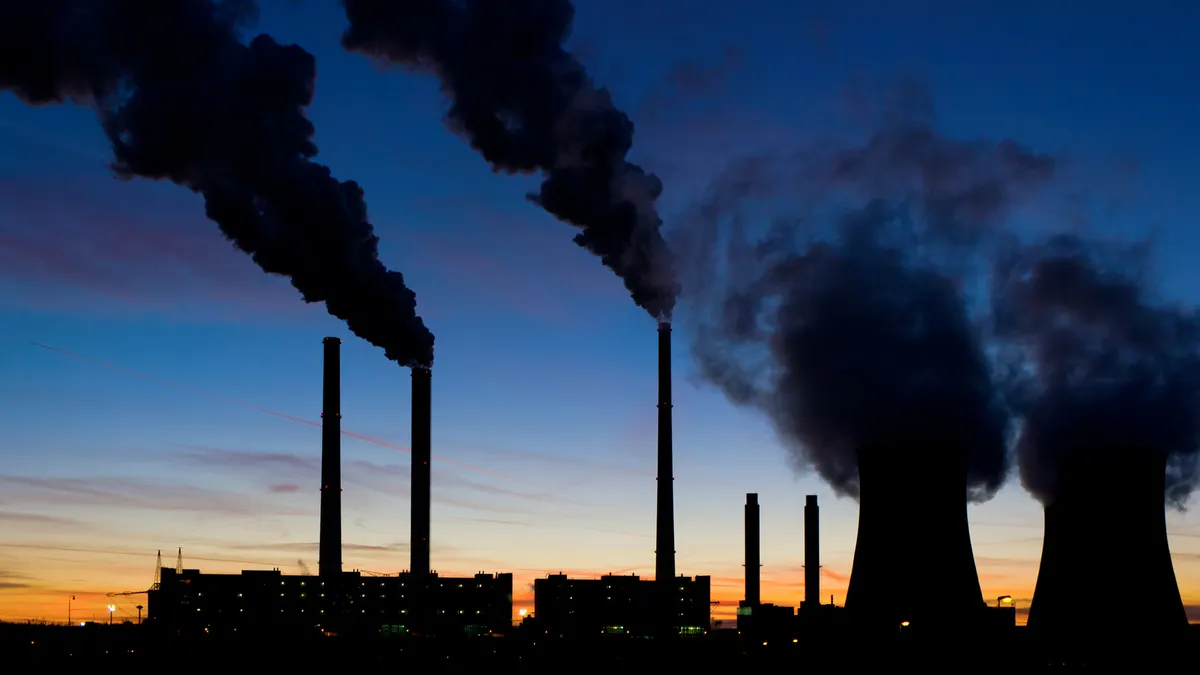Dive Brief:
- Coal production and the use of coal-fired energy will rise slightly this year and next, according to the U.S. Energy Information Administration, as rising gas prices allow coal a slight resurgence.
- The agency said coal production will increase most in the Western region, rising from 407 million short tons (MMst) in 2016 to 443 MMst in 2018.
- Coal's share of the generation mix declined from 2008 to 2016, leading to gas exceeding coal's share for the first time. EIA predicts construction of new gas plants will likely lead to gas' long-term dominance.
Dive Insight:
A rise in natural gas prices will reverse a lengthy trend in the decline of coal, but it will not play out equally in all regions, EIA noted, and will likely be short-term. U.S. coal production bottomed out at 739 MMst last year, the lowest level since 1978.
But EIA said that in this year and in 2018, as natural gas prices are expected to increase, "coal is expected to regain some share of the electricity generation mix, and coal production is expected to increase slightly."
Coal production is expected to increase most in the Western region, rising to 443 MMst in 2018. Predicted production levels in the Appalachian and Interior regions are relatively flat. EIA said coal production in the Appalachian region, where production costs are relatively high, would decline to 177 MMst in 2018, slightly lower than the 2016 level of 183 MMst. Interior coal production is expected to increase slightly, from 150 MMst in 2016 to 152 MMst in 2018.
The increased coal production is being driven by rises in gas prices. Natural gas' historically low price levels in recent years has accelerated the decline in coal, but as gas demand has risen so will prices. EIA has previously said it expects gas prices will rise from $2.50/million British thermal units in 2016, to $3.12/MMBtu this year.
Generation shares of nuclear and hydropower are expected to remain flat from 2016 to 2017.
By 2018, the coal-gas trend is expected to reverse and gas will continue a resurgence, EIA said. "New natural gas power plants are currently being built, and by 2018 the availability of these units may lead to increases in natural gas-fired generation," the agency said.















